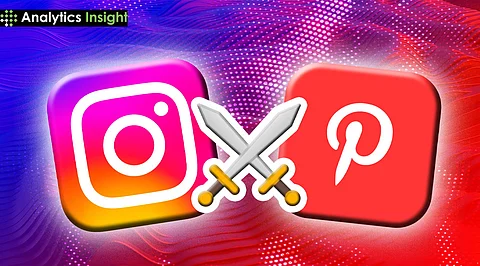

Pinterest outshines Instagram in 2025 with better content lifespan, SEO, link sharing, and user intent, making it ideal for lasting growth and meaningful engagement.
In the dynamic world of visual content, two platforms have ruled the roost: Instagram and Pinterest. Both provide distinctive experiences, but their fundamental functionalities differ dramatically. As 2025 progresses, further inspection shows that Pinterest can be the platform of choice for creators and businesses looking for long-term growth and substantive engagement.
Instagram cares about always being present. Its algorithm prefers the most recent posts, pushing them forward in the battle for thirty-second limelight. Another design decision disables the worth of content after thirty seconds, compelling incessant upload for backward viewership. The evolving cycle might be so time-lossful for transforming that it leads to burnout.
Another drawback is that direct links are disallowed under Instagram unless paid for or in some scenarios, such as "swipe-up" in Stories. This is a bit of a drawback for businesses trying to bring traffic to their sites or product pages.
A platform for longevity and discovery - On the contrary, Pinterest works like a visual search engine. Pins are evergreen; they can pop up into a user's searches months or even years after they were posted. That sort of lifespan for top-quality content means that it keeps making returns on investment long after being created.
Integration between Pinterest and search engines such as Google tremendously increases the reach of Pins. Pins often show up in search results, so they are a great way of driving organic traffic to websites that the Pins link to. This interface with search engines guarantees higher visibility and thus brings ever-growing engagement.
Pinterest users often engage with the platform with a purpose. Whether seeking inspiration or researching products, their intent translates into higher conversion rates. Statistics indicate that approximately 60% of weekly Pinterest users have made purchases based on content they discovered on the platform, with an average order value of around $50.
In contrast, Instagram users primarily browse for entertainment or social interaction. While influencer marketing can drive sales, the platform's design doesn't inherently support direct purchasing pathways, making conversions more challenging.
Maintaining a presence on Instagram demands consistent content creation and interaction. The platform's algorithm rewards frequency, pressuring users to produce and engage continually. This demand can detract from focusing on quality content and strategic planning.
Pinterest alleviates this pressure. Once a Pin is published, it continues to attract views and engagement without necessitating constant updates. This model allows creators to invest time in crafting valuable content, knowing it will remain relevant and discoverable.
Concerns about data privacy have plagued Instagram, with instances of data breaches and questions about user information handling. Such issues can erode trust and deter users seeking secure platforms.
Pinterest, with its emphasis on discovery over social interaction, presents fewer privacy concerns. Its user experience centers on personal exploration, free from the pressures of likes, comments, and constant notifications.
As the digital world evolves, the tools and platforms chosen can significantly impact success. Pinterest's model, emphasizing longevity, discoverability, and user intent, aligns well with the goals of creators and businesses seeking sustainable growth. While Instagram offers immediacy and broad reach, its limitations in content lifespan, link sharing, and user intent make it less conducive for long-term strategies.
In 2025, reevaluating platform choices becomes crucial. For those aiming to maximize impact and efficiency, transitioning focus from Instagram to Pinterest may prove to be a strategic move.
